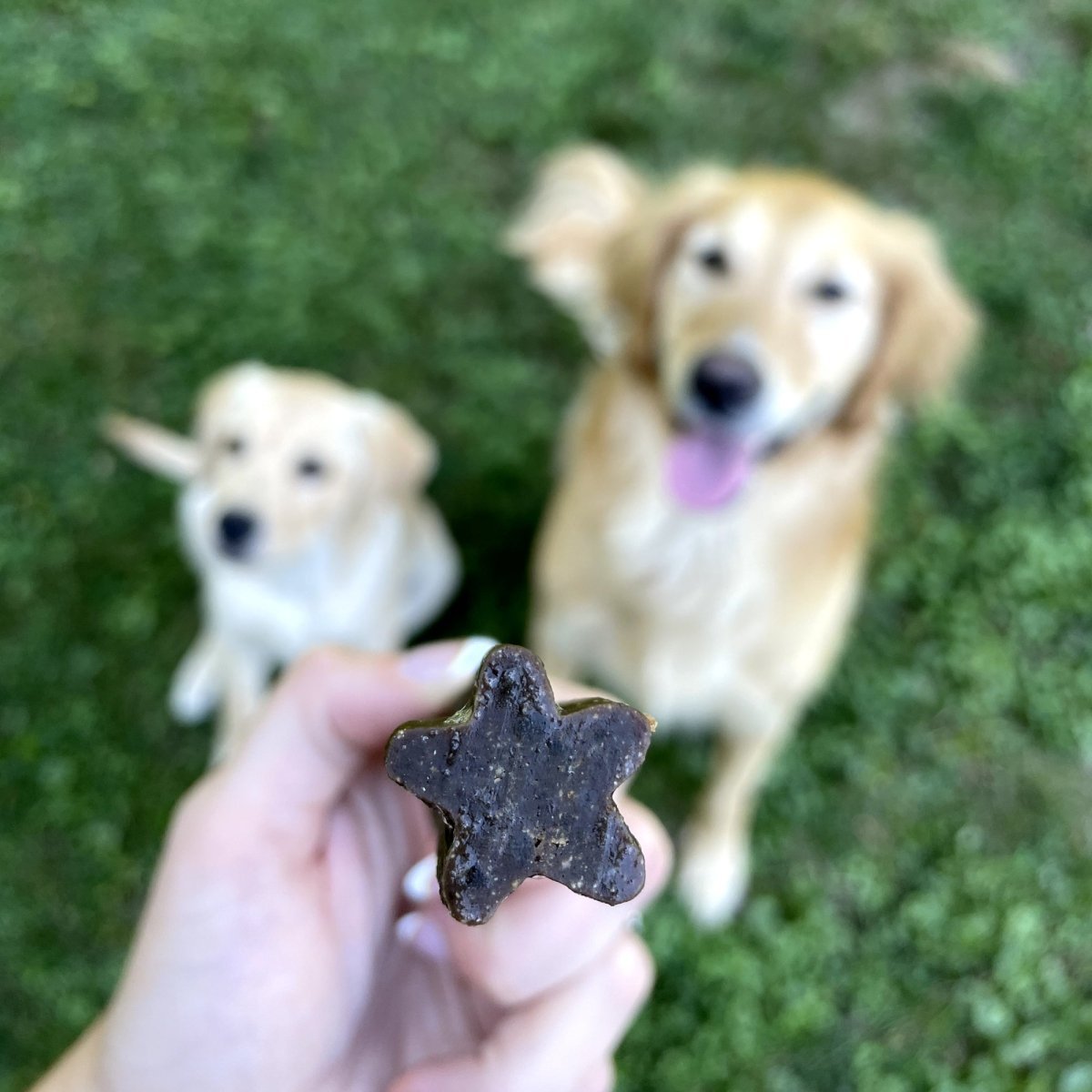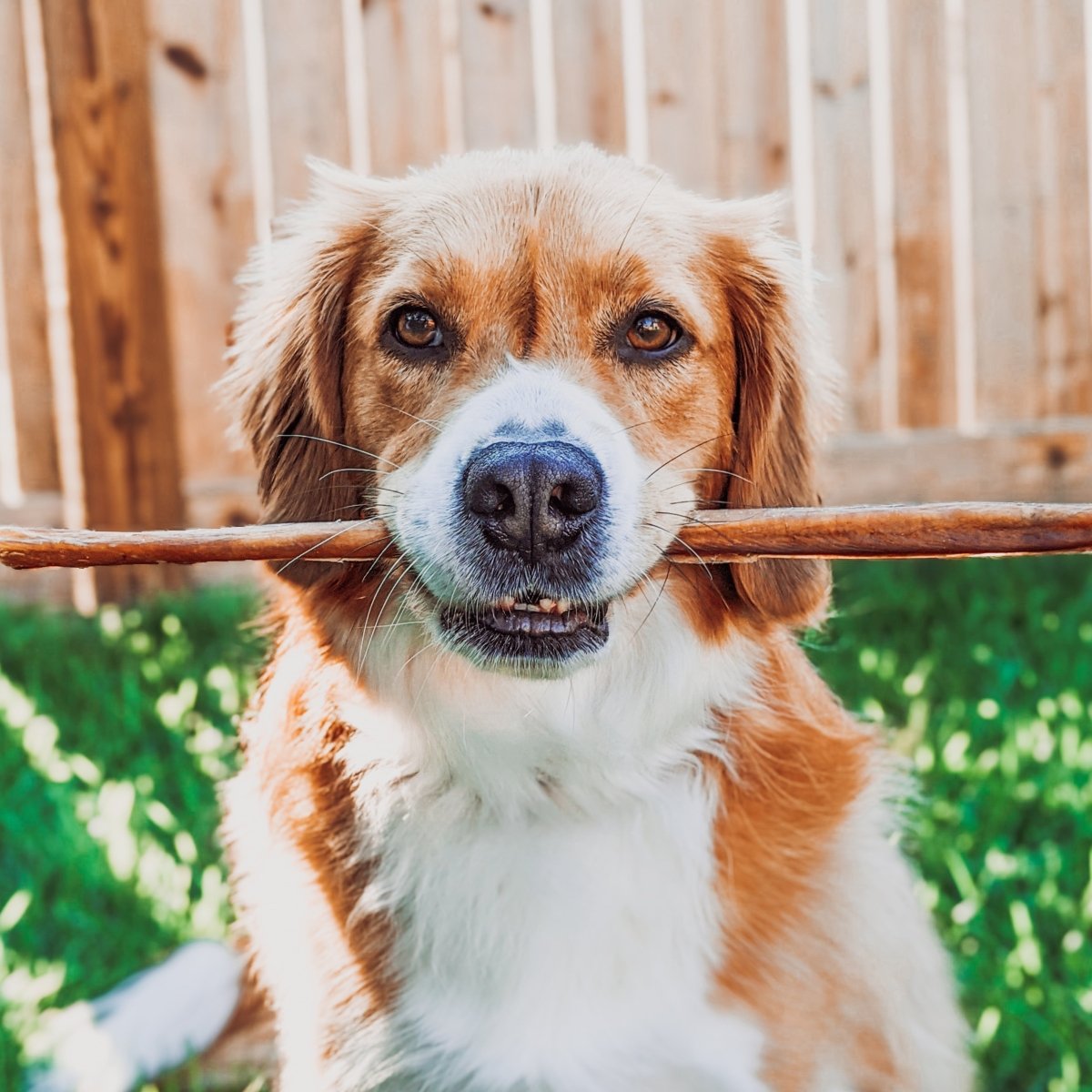

Sometimes your dog gets sad, and even a long-lasting dog chew isn’t enough to lift their mood. While most dogs’ low moods pass quickly, some of them do develop chronic depression that requires attention. Unfortunately, since dogs are nonverbal, diagnosing depression in dogs can be a bit trickier than identifying depression in humans. Today, we’re diving deep into whether or not dogs can get truly depressed, what the signs of depression look like, and potential treatments for depression in dogs.
While we won’t ever know 100 percent for sure — since they can’t tell us — some dogs certainly do exhibit the signs of depression. In fact, the symptoms of depression for dogs are similar to symptoms of depression in humans. They include being lethargic, withdrawing or becoming very clingy, and showing a lack of interest in activities they normally enjoy. Dogs may also exhibit changes in eating and sleeping habits, especially sleeping all day and refusing to eat their favorite dog food or dog bones.
Depression is usually diagnosed when the symptoms are ongoing and no other underlying cause has been found. Many dogs may briefly exhibit these symptoms for a few days, and then snap out of their mood and go back to their usual happy, relaxed behavior. Depression is diagnosed when this doesn’t happen, and instead, the behavior is chronic, lasting for weeks or even months. It’s important to get your dog checked out by a vet if they are exhibiting these behaviors for a long period of time since these behaviors can sometimes be a side effect of chronic pain or other health issues as opposed to “just” depression. Your vet will conduct an expert examination to figure out if the root of the issue is physical, mental, or both.
Note that dog depression is different from dog anxiety, which can sometimes have overlapping symptoms. Dogs can also simultaneously have both depression and anxiety. Anxiety in dogs usually manifests via “escape” behaviors, including hiding, trembling, tail tucking, panting, and pacing. Because anxiety causes their nervous system to stay constantly in overdrive, they may also experience diarrhea, skin lesions, and other physical manifestations of their anxiety. Your vet can help you figure out if your dog has depression, anxiety, or both, and come up with an appropriate treatment plan for whatever condition(s) they have.
Buy Bully Sticks for Dogs Online
Many different situations can potentially trigger depression in your dog, and many different factors combine to influence their susceptibility to depression. Some dogs experience extremely adverse circumstances and never develop depression, while others live in a caring and loving home, yet become depressed.

Here is a selection of common “trigger events” for dog depression:
There’s also another important trigger that we needed to talk about, which is YOU, the owner. Dogs pick up on our emotional states, and often reflect them back to us. If you’re happy, they’re happy — and if you’re depressed, that can make them depressed, too. If you’ve been feeling down yourself lately, that might be contributing to your dog’s sad mood.
As you can see from the list above, in many cases, depression is triggered by an extremely stressful situation and/or a major disruption to their routines. Some of these changes can occur without your noticing it, however. As an example, many people naturally exercise their dogs less during the cold, inclement winters, which can cause high-energy breeds to become bored and depressed until the weather warms back up and they start getting more exercise.
Dogs will often act differently depending on what is causing the depression. For instance, a dog who is depressed about the loss of a close animal companion may keep returning to areas of the house where their late friend used to hang out. Meanwhile, a dog who is depressed because of the arrival of a new baby may vocalize more or even pee or poop inside the house in a bid to get more attention.
Before you take your dog to the vet for a diagnosis, take a few minutes to reflect on your lives over the past few months and identify any potentially triggering events. Sometimes, there won’t be a specific event that caused the depression, but in many situations, you will be able to identify a trigger or even multiple triggers. You should also make a note of your dog’s specific symptoms to help the vet choose the most appropriate treatment.
Fortunately, there are many potential treatments for a dog with depression, and many of them are lifestyle changes that you can make without too much expense or hardship. Here are 11 solutions that might help alleviate your dog’s depression:

A tired dog is a happy dog. Regular exercise stimulates the release of feel-good endorphins, promotes a healthy sleep schedule, and will encourage your dog to eat. Make sure that you are exercising your dog at the appropriate frequency and intensity for their age, breed, and health conditions. If outdoor exercise isn’t currently a possibility due to the weather, then get creative and brainstorm some ideas for exercising indoors instead.
Dogs need mental stimulation as well as physical stimulation. Thankfully, there are many different ways to work your dog’s mind, from getting them a new puzzle toy to taking them to a new dog park. Some dogs thrive on a lot of new stimuli, while others need a lot of routine and familiarity to feel secure, so let your dog be your guide on this one.
If your dog’s depression is caused by a major upset in their routine, such as moving into a new home or the kids starting school, make an effort to create a new routine and get them acclimated to it. In some cases, your dog’s depression will abate as they adjust to their new schedule and realize that this is now the new normal.
On the other hand, if your dog’s depression is caused by too much isolation and routine, taking them to new places might be the solution. This can be as simple as taking a new walk route or as involved as going on a weekend getaway to a dog-friendly destination. If your dog also has anxiety, be careful with going too far out of their comfort zone, which can trigger their symptoms.
Many dogs thrive on a lot of socialization with both other dogs and humans. Inviting familiar people and animals over to your house for a playdate is a low-stress way to help your dog get some of that social connection. If you want something more long-term — but not permanent — then you can also consider fostering another dog for a few days or longer.

If your dog’s depression is caused by the loss of a beloved animal companion, adopting a new furry friend might help alleviate some of their sadness (although other dogs may be upset by yet another change in their routine). Obviously, you don’t want to do this until you are ready, but when you are ready to open your heart to a new pet again, it could make a huge difference for both you and your dog.
If your dog’s depression is resulting in weight loss, you may need to encourage your dog to eat by adding a topper to their food or enticing them with collagen chews for dogs. Be careful with completely changing their diet at once as this can cause digestive issues. If you think you might need to switch up their dog food, talk to your vet about the best way to do that gradually.
Your dog might be grumpy and sad because you’ve been away from the house a lot and you haven’t been able to spend as much time together as normal. Carving out time in your schedule to spend some deliberate time with your dog, whether that’s giving them a massage or watching TV together, can help soothe them and help them feel secure.
Sometimes your dog’s depression may be related to a specific fear or phobia that they have. In these situations, getting therapy from a dog behavior expert can help them overcome their fear or phobia and relieve their depression symptoms.
Speaking of dog trainers, they can be a huge help if your dog’s depression is causing them to act out in dangerous and destructive ways. While behavioral training won’t address the underlying causes of their depression, it will help to curb their destructive instincts and keep them from becoming a habit while you address their depression with other treatments on this list.
If your dog’s depression persists despite the lifestyle changes listed above, your vet might recommend that they go on medication. Some of the medications that are prescribed for humans with depression — Paxil, Prozac, and Zoloft — are also prescribed for dogs with depression, but the dosages and length of treatment are different. Talk with your vet if you think your dog might benefit from medication.
Giving your dog healthy yet tasty treats can be a great way to encourage them to eat when they’re depressed. At Best Bully Sticks, we make all-natural single ingredient dog treats, including bully sticks for dogs, antlers for dogs, and more. Orders over $79 ship free, so don’t be afraid to load up on treats for your furry friend!
Comments will be approved before showing up.

Dental chews keep plaque in check and gums strong. Read here to learn about nature's toothbrush!

Single-ingredient dog chews and treats are crafted using only one whole food source!

Check out our guide on different types of chews to help you decide on the best chew for your dog!